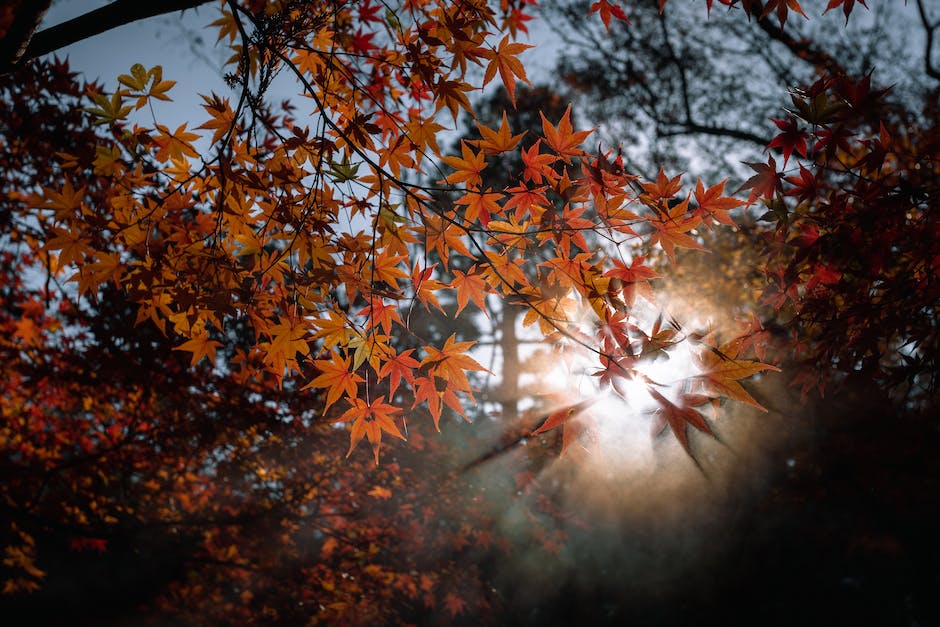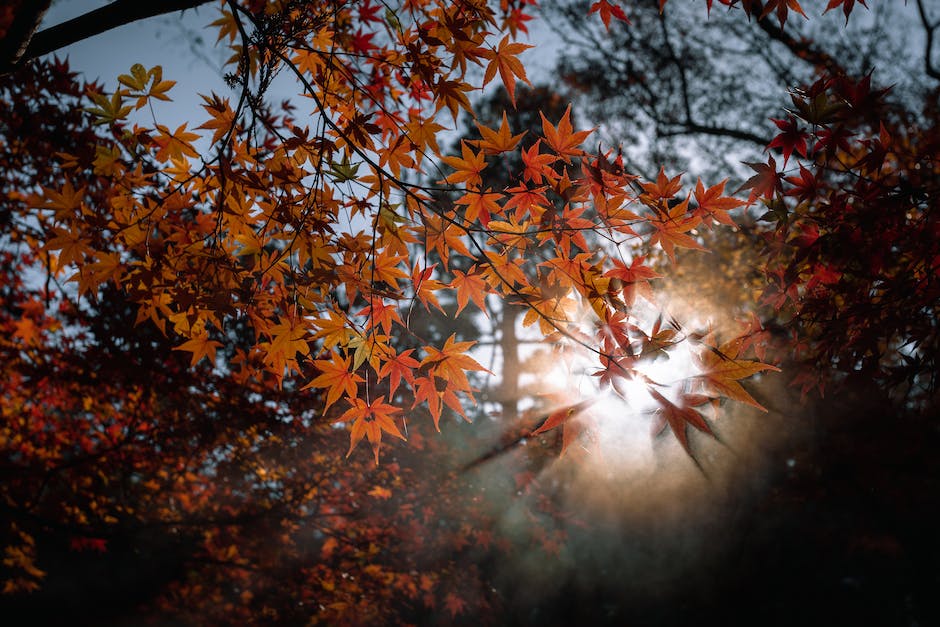Since Japanese maples are low-maintenance trees, many gardeners wonder if they can trim a Japanese maple tree. The answer is yes, you can trim a Japanese maple tree!
Yes, you can trim a Japanese maple tree.
Is it OK to trim a Japanese maple?
Pruning your Japanese Maple is important to maintain the health and beauty of your tree. You can prune your Japanese Maple any time of year, but for heavier pruning, it is best to do so in the summer or winter. Winter is the best time for modifying the branch structure while summer is best for thinning out the branches of your tree.
Pruning a Japanese maple is a delicate process – too much and you can damage the tree, too little and it won’t be as effective in promoting growth. The key is to remove no more than one-fifth of the tree’s crown, and to focus on pruning branches that are less than half the diameter of the parent stem. Additionally, don’t remove more than a quarter of the foliage of any given branch. By following these guidelines, you can avoid causing stress or stimulating unsightly growth.
How do you prune and shape a Japanese maple tree
You can trim a small, young branch in the middle to encourage more branching, but always cut just in front of a leaf bud. Small and medium-sized cuts can be done with pruners and loppers. Just cut the branch as close to the main trunk or stem as possible.
Japanese maple trees are known for their beauty and gracefulness. They can grow 12 to 24 inches (30 to 60 cm) per year and can reach 10 to 25 feet (3 to 76 metres) after 15 years. However, you can keep them to a smaller, manageable size with yearly pruning.
How do you trim a Japanese maple without killing it?
If you need to trim a large tree, it’s best to do it gradually over a period of years. Cutting off a large portion of the tree at once can shock the plant and kill it. So instead, cut a few branches one year, then wait until the next year or the year after that to cut the rest of the branches. By doing this, you’ll help the tree stay healthy and strong.
Pruning is an important part of keeping your tree healthy and strong. By pruning back branches that point to the inside of the tree, you allow more light and air to reach the inner parts of the tree, which helps to promote growth. Additionally, by removing any damaged or dead wood, you help to prevent the spread of disease. Finally, by trimming away any overeager branches, you help to encourage the growth of stronger, healthier branches.
What kills Japanese maple trees?
Japanese maples are susceptible to a soil-borne fungal disease called phytophthora. This disease is caused by wet conditions, and can kill trees branch by branch.
Japanese maples typically grow just one to two feet per year, but under the right conditions, they can live to be over one hundred years old. If you’re looking for a long-lived tree, it might be wise to buy the largest one you can afford.
How old should a Japanese maple be before pruning
Young trees need to have the lowest limbs removed to enhance clearance. Begin training the tree when it is two or three years old. Remove any limbs that are rubbing against each other or are too close. Prune out small twigs and branches on the interior of the tree.
You want to cut first at one side and then the other side. And then you’re cutting that whole heavy sheet of metal in half, right down the middle. But if you’re only cutting one side first, the other side is going to bend inwards and make cutting the metal much harder. So, always cut both sides of metal simultaneously to get a clean cut.
Can you trim a Japanese maple with a hedge trimmer?
A Japanese maple is a delicate plant and should be trimmed or pruned with a sharp, clean pair of shears. Rough tools, such as electric trimmers, can damage the plant.
When you bring new plants home from the nursery, it’s important to keep them moist and in the shade until you’re ready to plant them. This will help them to stay healthy and avoid stress.
Preparing the soil before planting is also crucial, particularly if you’re dealing with heavy clay soil. Incorporating organic matter into the soil will help to improve drainage and make it easier for the roots to spread.
Once the plants are in the ground, be sure to mulch around them with a layer of 6 inches. This will help to reduce the need for frequent watering and also protect the plants’ shallow roots.
Finally, resist the temptation to prune newly planted trees too heavily. A little light shaping is fine, but too much pruning can damage the tree’s ability to produce new growth.
Can you trim a maple tree anytime
Pruning maple trees in the late winter or early spring is ideal in order to avoid damaging the tree’s blooms. Pruning in the late summer can also be beneficial in shaping the tree, slowing the growth of certain branches, and getting rid of dead limbs.
When planting a red Japanese maple, one factor to consider is the amount of sunlight the tree will need to maintain its bright-red color. Too much shade will minimize the red shades and the leaves will not be as striking in the shade as they would be in an area with more sunlight.
What happens if Japanese maple gets too much sun?
Sunshine and high temperatures are key ingredients for growing beautiful Japanese maples. However, too much sun can be harmful. Japanese maples are prone to sunburn, especially young leaves and trees. In hot summer weather, sun exposure can cause leaves to turn brown and crispy. If your tree is exposed to direct sunlight for more than six hours per day, it’s at risk for sunburn. Providing shading for young trees during the hottest months can help prevent sunburn damage.
Pruning is a crucial step in keeping trees healthy and ensuring that they do not become a problem for their surroundings. If the crown of a tree is stretching too tall or wide, corrective pruning can help rein it in and size it down for the space available. It is important to prune a tree before it becomes a problem because taking away too many branches could cause unnecessary stress.
Do Japanese maple trees need lots of water
When planting these trees, water them deeply and regularly for the first few years to help them become established. They are quite drought-tolerant when mature, but like most young trees, they need regular deep waterings during the first few years. Plan to water heavily twice a week during normal weather and three or even four times weekly in periods of drought.
Japanese maples are susceptible to a number of leaf spot diseases that may cause the leaves to become disfigured and cause early defoliation. The major foliar diseases are anthracnose, Phyllosticta leaf spot and Pseudomonas tip blight. While there are several insects that may attack Japanese maples, the most common leaf feeders are the Japanese beetle.
Can a Japanese maple take full sun
There are many different types of Japanese maples, and not all of them are equally tolerant of full sun. If you choose a variety that is less tolerant of full sun, you may find that it develops leaf burn in the summer heat. However, if you choose the right variety, amend the soil properly, and give it proper care after planting, you can enjoy the beauty of a Japanese maple in full sun even in the Triad.
Ideally, Japanese maples should be placed in a spot with dappled shade. Their foliage is prone to leaf scorch in hot and dry locations in full sun. Scorched leaves develop brown margins and often drop from the tree by mid to late summer.
Are Japanese maples high maintenance
These trees are undeniably beautiful and make a wonderful addition to any garden or landscape. They are relatively low-maintenance, which is great news for anyone who doesn’t want to spend hours caring for their trees. Bloodgood Japanese maple trees are known for their deep, vibrant foliage and delicate branches. No matter what time of year, these trees are sure to stand out.
Japanese maple trees are best planted in the spring or fall. They require extra attention in the first few years while they’re getting established, but after that they are easy-to-grow, low-maintenance, and hardy.
What month do you prune maple trees
The best time to prune most deciduous trees is during the late winter months when they are dormant. This is because the trees will have fewer leaves on their branches, providing a better view of the canopy shape for cutting. Pruning during this time of year also allows the trees to care for themselves more efficiently during the spring months.
This is normal. don’t worry, it will be brilliant in the fall, and next spring too, when it leafs out again.
What happens when you cut the top off a maple tree
Tree topping is not a recommended practice as it can cause injury to the tree and potentially lead to its early death. When large branches are removed, it leaves behind large open wounds which can be susceptible to disease and decay. Topping can also cause stress to the tree which can make it more susceptible to pests and other problems.
Pruning a tree incorrectly or too often can have serious consequences for the tree. If a tree loses too much of its canopy at one time, it can become weak or even die from the stress. That’s why it’s important to only trim 25% of the tree’s canopy at one time.
How far can you cut back a maple tree
if more than a third of the tree’s aboveground growth is removed in one go, the tree may be subjected to physical stress that could be harmful.
Your tree will look best if you thin out its branches evenly. This will give it a balanced look and allow the branches to grow properly. To thin the tree, use your shears or loppers to remove any overlapping branches.
Conclusion
Yes, you can trim Japanese maples, however it is best to prune them in late winter or early spring before new growth begins.
Japanese maple trees can be trimmed, but it is important to trim them correctly. If done incorrectly, it can damage the tree. Japanese maple trees can be pruned in early spring before new growth begins.
Jackson Hill is a passionate arborist with years of experience in the field of trees. He developed his fascination with trees at a young age, spending countless hours exploring the forests and climbing trees. Jackson went on to study arboriculture and horticulture at Michigan State University and later earned a degree in forestry from the University of Michigan.
With his extensive knowledge and expertise, Jackson has become a trusted authority on trees and their impact on the environment. His work has helped shape the field of arboriculture and he continues to be a leading voice in the industry.
